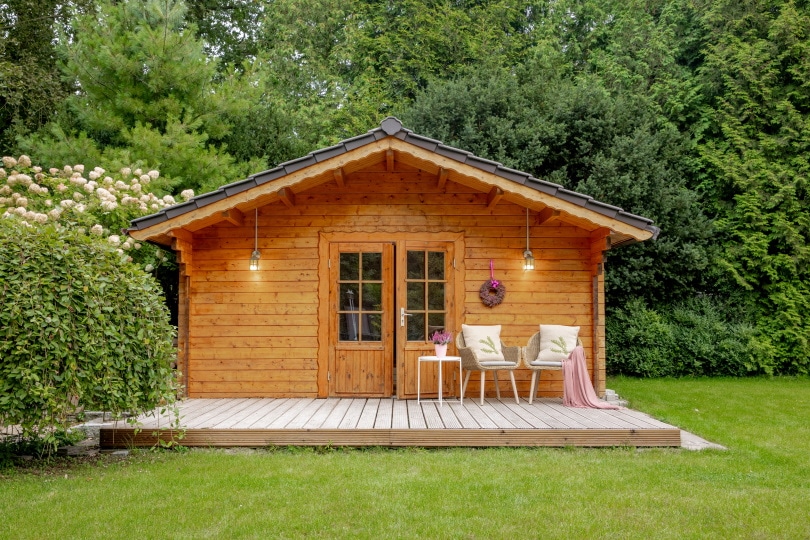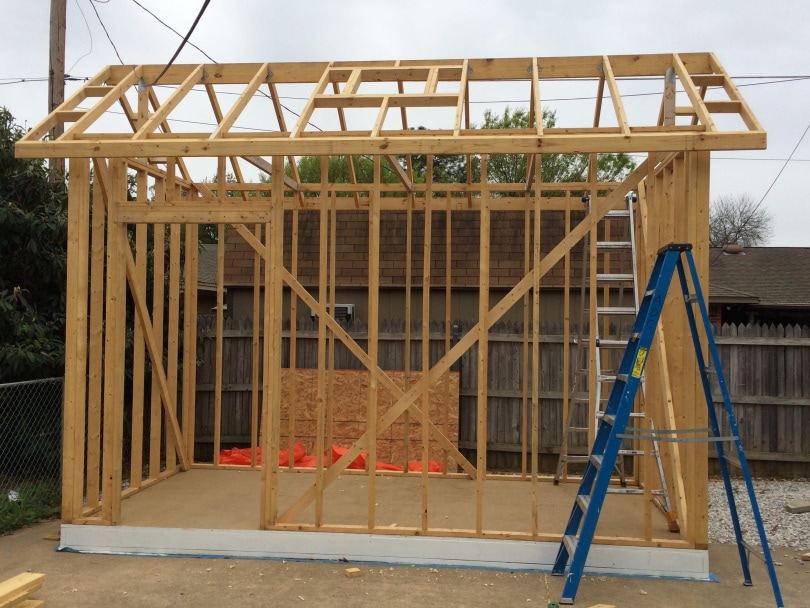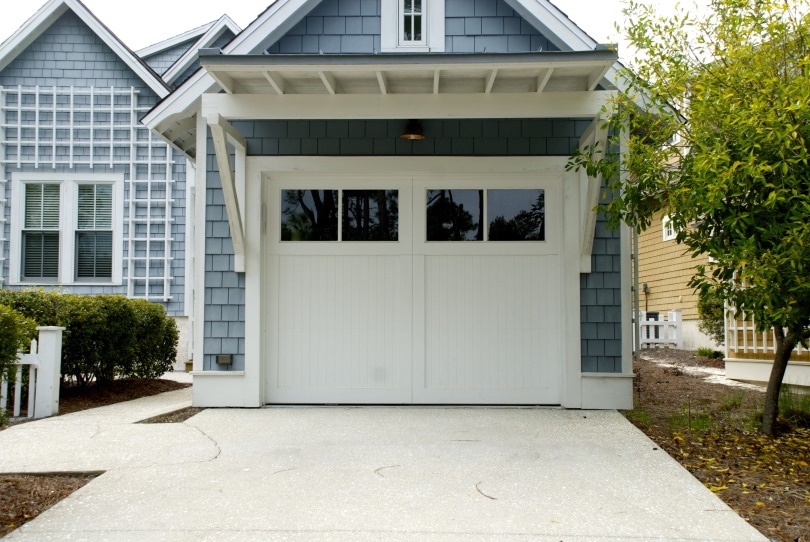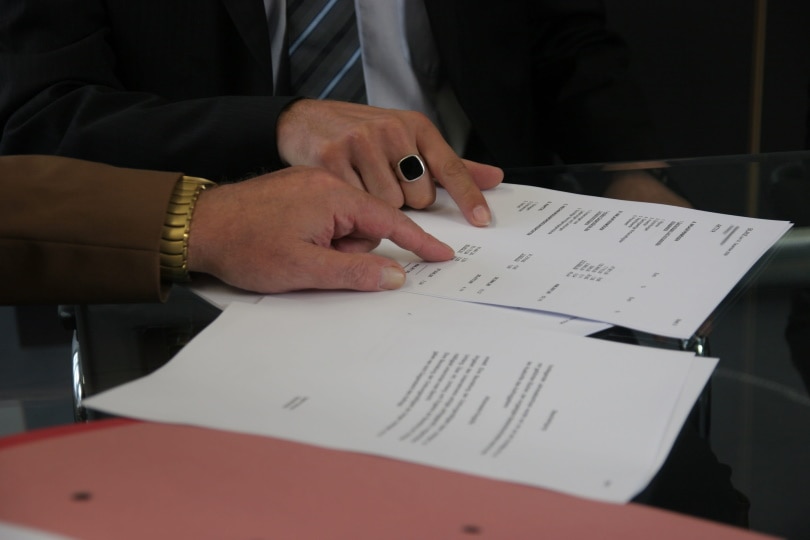Do I Need a Permit To Build a Shed In Texas? Know Before You Start
-

- Last updated:

Texas is known for its strict laws. This is especially true for permits and licenses. Let’s say you want to build a brand-new shed. Are you allowed to do that? Or will you need to get a permit first? The good news is as long as the shed is less than 200 square feet and not used as a work, business, or living space, no permit will be required.
However, it’s not always that simple: there are many things to keep in mind before you go ahead and build that shed, like setbacks, easements, electrical permits, local city laws, and more. Ready to learn everything there is about Texas build permits? Then read on!
What Is Considered A Shed In Texas?
A shed is a roofed, enclosed, and single-story building constructed from metal or wood. A shed is a detached structure (meaning it’s not physically attached to your house) used for storage. You can store whatever you want in the shed, including tools, equipment, hardware, or feed for your cattle, and no extra permits will be required for that.

What Is A Permit?
The idea behind permits is simple, yet important. They ensure that whatever changes you introduce on your property (like building a shed) are of no danger to you or your neighbors. Permits are concerned with the welfare, safety, and health of the public. A permit allows city officials to review your project, inspect the construction site, and (hopefully) give you the green light.
When you get a permit, that means you’re up to code with both the state and the city.
When Can You Build Without A Permit?
If you comply with the following requirements, a permit will NOT be required by the state of Texas to build a shed:
- The shed is less than 200 square feet
- It’s a single-story building
- It’s less than 15 feet tall
- It’s a detached building
- You don’t have plumbing in the shed
- The shed is not built on a floodplain
- You only use it for storage (nobody lives there)

Commercial Buildings and Local Laws
Please keep in mind that these rules apply only to non-commercial structures. If you’re building a commercial accessory structure, you will need a permit if the building is over 120 square feet and 12 feet tall. Furthermore, in certain cities in Texas, the laws are a bit more demanding and require the same 120/12-foot rules to be followed even if you’re building a non-commercial shed.
So, before going forward with this DIY project, it’s important to make sure you’re not violating any local laws.
What Is An Electrical Permit?
If you have electricity in the shed, you will need an electrical permit for that. Don’t forget to tell the reviewer(s) that you’re planning on running electricity to your new building (the shed, in our case). If you don’t mention this in the application, that can lead to issues with the law. Most folks only need one single outlet or a light source in their sheds. Still, an electrical permit will be required.
Contact your local service center, and they should help you out. Or, if you hired a professional electrician to handle everything, then it will be the contractor’s job to take care of the permit. A quick note: in Texas, permits are only handed out to registered electricians if the job involves working with the main electrical meter.

What Is A Tree Permit?
Do you have some old trees on your property that are 19+ inches in diameter? If the answer is yes, you’ll need a TORA (Tree Ordinance Review Application) to proceed. The city will also charge you a small fee. Remember: trees this large are known as “heritage trees” and you won’t be able to remove them without permission. So, grab a tape and measure the diameter of every tree you’ve got (measure at the trunk, 4–5 feet from the ground).
Zoning Requirements: What Are They All About?
Even if you’re 100% clear with the state and can build a shed without a permit, the so-called “zoning requirements” will still apply to you. Don’t worry; this isn’t rocket science—even though it can be a bit confusing at first. Here’s what you need to know about zoning:
Setbacks
The term “setback” is used to describe the gap, or, rather, space between an area where a building is allowed to be built and a lot’s border. In simpler terms, you can’t build anything on a setback. For example, if you’re sticking to the rules and your shed is less than 15 feet in height, the law requires you to keep at least 5 feet of “no-man zone” both from the side and the rear property lines.
And if the shed is taller than 15 feet, make sure there’s a 10-foot setback between your rear property line and the shed and 5 feet from your sidelines. But wait, what about the front property line? For that, there’s a 25-foot setback in Texas, regardless of how big or small the shed is.

Easements
This one’s a bit more complicated. An easement is a tiny piece of land that your neighbor(s) and the government have the right of passage on. You can’t build anything there. Different cities in Texas have slightly different definitions of an easement, which is why it’s important to get in contact with the local government (the courthouse or property office). Ask them for a property survey.
There, you’ll find all the necessary info on land boundaries. Are you having a hard time accessing a property survey? Then try calling 811. This number will automatically get you in contact with an official 811 center representative from Texas. It might be easier to handle potential easement issues that way.
Impervious Cover
The last legal term for us today is “impervious cover”. It refers to any man-made/stone constructions or surfaces that don’t absorb rainfall or prevent the ground from absorbing the water on your land. Think parking lots, driveways, sideways, and even rooftops. What’s the reason behind this? Potential flooding, of course. Impervious cover restrictions make sure you won’t suffer severe flooding consequences in case of heavy rain.
In Texas, if your property is located on a floodplain, the maximum impervious coverage can be 10% of the land. And if you do NOT leave on a floodplain, you can cover up to 45% of the land/property with impervious surfaces, including driveways, parking lots, etc. Keep this in mind when building a shed. You might want to choose a different material for it if that’s going to be a problem.

How Much Will A Permit Cost?
This largely depends on the city you live in. But, it won’t cost you much. On average, Texas charges $15–25. The exact fee depends on how much you spend on the shed. Most Texas cities charge as little as 1%. That means if the shed costs you $3K, the fee will be $30. Again, certain areas might charge a bit more, but, overall, permits aren’t at all expensive.
More good news is that it usually takes around three days to review and approve a permit. You will get a notification via phone the moment the permit is approved and you won’t have to wait for months to start building a shed. Do keep in mind, though, that if your plan is incomplete, or if the shed has a custom or unusual design, that will take longer to approve.
How Do You Get A Permit In Texas?
The steps towards obtaining a permit from the Texas government are almost identical to those in every other US state. Here’s what you need to do:
- Complete an official application. Make sure it includes your current address.
- Prepare a site plan for the shed. It should prove the project meets zoning requirements.
- Schedule an appointment. They might ask you to get that approval in person.
- Get the permit, but don’t start building yet.
- Have inspectors over. The city will check whether you’re “sticking to the plan”, or not.
- Build the shed, wait for final approval by the state and the city, and that’s it!

Please remember that building permits only last for six months. It is possible to request an extension, but it would be best to complete the project within those 180 days.
What If I Build A Shed Without A Permit?
You should NEVER do that. Even if your contractor suggests building a shed (or any other construction) without a permit, we recommend you start looking for another contractor. True, the process might take a while, but it’s always better to be safe than sorry. Dealing with city officials that catch you “red-handed” will cost you a lot more time, money, and nerves.
That is why it would be best if you get a permit long before you start building the shed.
How Harsh Are The Penalties In Texas?
Like with the permits, zone requirements, and everything else, this depends on the city. Now, in Texas, the penalties for not having a permit for a commercial builder are significantly higher than for an individual building on their own property. So, how much can you expect to be fined? On average, it’s going to be north of $1K. Yes, it’s pretty harsh. Plus, you’ll get an official warning, and they will strongly recommend you get one.
The second violation will cost twice as much. On top of that, the state/city might obligate you to shut everything down before the shed is even built. If you keep on working on the shed and the authorities catch you again, they’ll charge you $3–5K. They may even place a lien on your property. In some severe states, the penalty can be much higher and reach $50K.
And one more thing: illegal construction has a huge negative effect on the estimated value of your house. Keep this in mind if you’re planning on selling it.

Conclusion
Building permits can be a bit tricky, especially if you live in Texas. The size, height, and the number of stories are just some of the factors that define whether a permit is required or not. As we learned today, zoning requirements are just as important. And let’s not forget about the tree and electrical permits!
Yes, there’s a lot to keep in mind, but we’re confident that with the help of our detailed guide, you’ll figure this out in no time! Before building a shed, make sure to get in contact with local authorities because the laws on building permits tend to change rapidly. Take care, and enjoy your new shed!
Featured Image Credit: M Gl, Shutterstock
Contents

